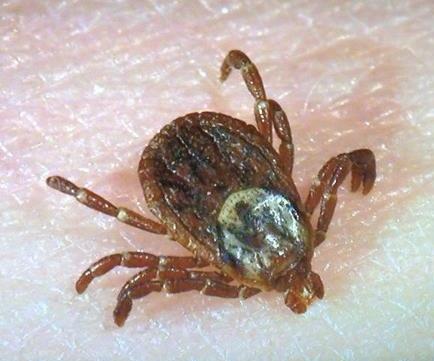DNREC, DPH Offer Tips About Ticks
Department of Natural Resources and Environmental Control | Division of Fish and Wildlife | Date Posted: Monday, July 12, 2021
Department of Natural Resources and Environmental Control | Division of Fish and Wildlife | Date Posted: Monday, July 12, 2021

Summer in Delaware is all about the great outdoors – biking and hiking, backyard and beach days, gardening and grass cutting. These time-honored summer activities can expose outdoor enthusiasts to unwanted guests – ticks. Depending on the type of tick, their irritating bite can transmit a variety of pathogens that can cause illnesses ranging from mild to serious.
The Delaware Department of Natural Resources and Environmental Control in partnership with the Delaware Division of Public Health have launched new web pages to educate the public about ticks, including where they are found, how to identify different types and what precautions to take before and after exposure to ticks, as well as information about tick-borne pathogens.
Tick facts include:

In Delaware, ticks are everywhere, but most bites occur in backyards.
Recommended precautions include:
For more information, visit the DNREC website at de.gov/ticks and the DPH website at de.gov/lyme.
About DNREC
The Delaware Department of Natural Resources and Environmental Control protects and manages the state’s natural resources, protects public health, provides outdoor recreational opportunities, and educates Delawareans about the environment. The DNREC Division of Fish and Wildlife conserves and manages Delaware’s fish and wildlife and their habitats, and provides fishing, hunting, wildlife viewing and boating access on nearly 65,000 acres of public land. For more information, visit the website and connect with @DelawareDNREC on Facebook, Twitter or LinkedIn.
Media Contacts: Joanna Wilson, joanna.wilson@delaware.gov; Michael Globetti, michael.globetti@delaware.gov
###
Keep up to date by receiving a daily digest email, around noon, of current news release posts from state agencies on news.delaware.gov.
Here you can subscribe to future news updates.
Department of Natural Resources and Environmental Control | Division of Fish and Wildlife | Date Posted: Monday, July 12, 2021

Summer in Delaware is all about the great outdoors – biking and hiking, backyard and beach days, gardening and grass cutting. These time-honored summer activities can expose outdoor enthusiasts to unwanted guests – ticks. Depending on the type of tick, their irritating bite can transmit a variety of pathogens that can cause illnesses ranging from mild to serious.
The Delaware Department of Natural Resources and Environmental Control in partnership with the Delaware Division of Public Health have launched new web pages to educate the public about ticks, including where they are found, how to identify different types and what precautions to take before and after exposure to ticks, as well as information about tick-borne pathogens.
Tick facts include:

In Delaware, ticks are everywhere, but most bites occur in backyards.
Recommended precautions include:
For more information, visit the DNREC website at de.gov/ticks and the DPH website at de.gov/lyme.
About DNREC
The Delaware Department of Natural Resources and Environmental Control protects and manages the state’s natural resources, protects public health, provides outdoor recreational opportunities, and educates Delawareans about the environment. The DNREC Division of Fish and Wildlife conserves and manages Delaware’s fish and wildlife and their habitats, and provides fishing, hunting, wildlife viewing and boating access on nearly 65,000 acres of public land. For more information, visit the website and connect with @DelawareDNREC on Facebook, Twitter or LinkedIn.
Media Contacts: Joanna Wilson, joanna.wilson@delaware.gov; Michael Globetti, michael.globetti@delaware.gov
###
Keep up to date by receiving a daily digest email, around noon, of current news release posts from state agencies on news.delaware.gov.
Here you can subscribe to future news updates.